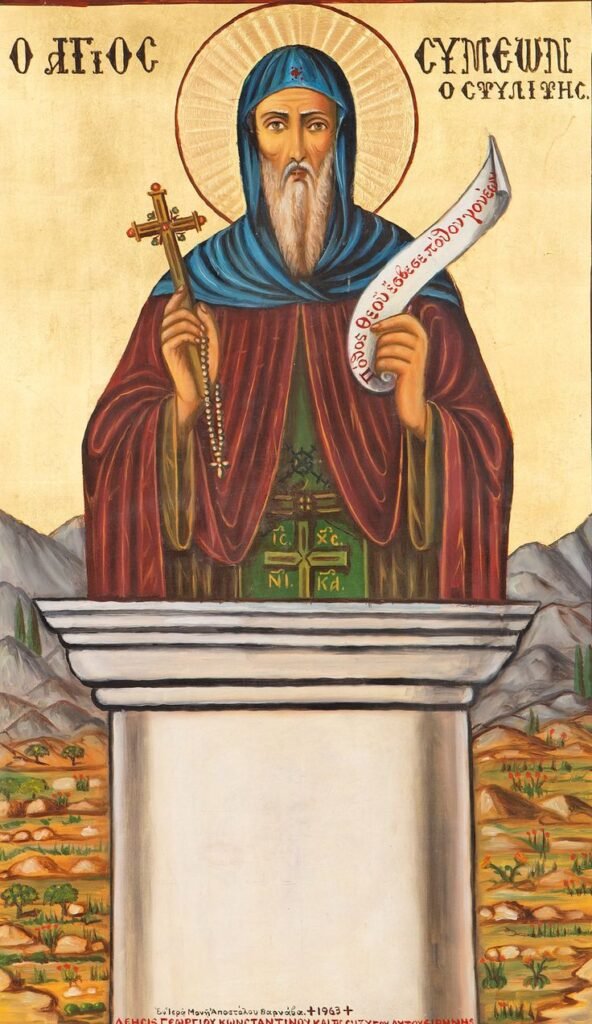The Feast of the Presentation of Jesus in the Temple, also known as the Feast of the Meeting or the Purification Feast, is one of the minor Lord’s feasts in the Coptic Orthodox Church.
Celebrated annually on February 15 (8 Amshir in the Coptic calendar), this day commemorates the event described in the Gospel of Luke when the Virgin Mary and Joseph took baby Jesus to the Temple in Jerusalem.
While this feast has always held deep religious significance, current events in Palestine have given it even more relevance today.
The Biblical and Spiritual Significance of the Feast
According to Jewish law, forty days after the birth of a firstborn son, the mother was required to present him at the Temple of Jerusalem and offer a purification sacrifice. This was in obedience to the Law of Moses (Leviticus 12:1-8).
Since Mary and Joseph were of humble means, they offered two young pigeons instead of a lamb, as permitted by the law for those who could not afford more.
At the Temple, they were met by Simeon the Elder, a righteous man who had received a divine revelation that he would not die before seeing the Messiah.

When he saw Jesus, he took Him in his arms and praised God, saying:
“Now, Lord, you let your servant depart in peace, according to Your word, for my eyes have seen Your salvation.” (Luke 2:29-30)
Additionally, the prophetess Anna, the daughter of Phanuel, also recognized Jesus as the Savior and spoke about Him to those awaiting the redemption of Israel.
This feast is deeply connected to themes of obedience, humility, and faith, emphasizing that Jesus came as the light of the world, fulfilling God’s promise of salvation.
How the Feast is Celebrated in Egypt
In Egypt, the feast is marked by special church services, prayers, and reflections. Here’s how Copts celebrate it:
- Divine Liturgies are held in churches, with readings from the Gospel recounting Jesus’ presentation at the Temple.
- Hymns and praises are sung, reflecting on Jesus as the light of the world.
- Some churches hold processions inside the church, carrying an icon of the baby Jesus, symbolizing His entrance into the Temple.
- Many believers take this occasion to reflect on humility and faith, drawing lessons from the Virgin Mary and Saint Joseph.
- Families often gather for meals after the church service, using the time to discuss the spiritual meaning of the event.
Why This Feast Has Greater Significance Amid the Political Situation in Palestine
With the ongoing conflict in Palestine, this feast takes on a deeper meaning as it brings attention to Jerusalem, its religious significance, and the struggles of Palestinian Christians today. Here’s why:
1. A Reminder of Jerusalem’s Spiritual Importance
Jerusalem has always been central to Christian, Muslim, and Jewish faiths. The feast reminds believers of the city’s sacred history and its role in the life of Christ. However, the continued conflicts have left many wondering about the fate of Jerusalem’s historical and religious sites, as well as the people who live there.
2. Reflection on Peace and Salvation
Simeon the Elder’s prophecy about Jesus as the light of the world is even more meaningful now. Amid war and suffering, the message of Jesus as the bringer of peace and salvation resonates strongly. It is a reminder for Christians to pray for peace and justice in the region.
3. Christian Solidarity with Palestine
Egyptian Copts share strong ties with Palestinian Christians, who make up a minority facing immense challenges. Many churches and Christian communities in Bethlehem, Jerusalem, and Gaza struggle to survive under difficult conditions. This feast serves as an occasion to express solidarity, pray, and support those affected by the conflict.
4. The Threat to Christian Heritage in the Holy Land
The ongoing crisis threatens many of Christianity’s most sacred sites, including the Church of the Holy Sepulchre in Jerusalem and the Church of the Nativity in Bethlehem. The feast serves as a call to protect Christian heritage and preserve the historical places associated with Jesus’ life.
5. A Call for Humility and Charity
The Virgin Mary and Joseph’s humility in offering two doves instead of a lamb is a powerful reminder, especially in a time when many people in Gaza and Palestine are struggling for basic necessities. This feast encourages believers to practice humility, faith, and generosity, helping those in need as an act of Christian love.
A Feast of Faith, Humility, and Hope
The Feast of the Presentation of Jesus in the Temple is more than just a historical commemoration—it is a moment of deep reflection, faith, and connection to Jerusalem’s spiritual legacy. At a time when the Holy Land faces conflict and suffering, the feast stands as a reminder of Jesus’ message of peace, salvation, and hope.
For Egyptian Copts and Christians around the world, this feast is a call to pray, reflect, and stand in solidarity with those enduring hardship in Jerusalem, Palestine, and beyond. It is also an opportunity to renew faith, practice humility, and seek justice, staying true to the teachings of Christ.
As we celebrate this occasion, let us remember the words of Simeon the Elder, who saw in Jesus the fulfillment of God’s promise—a promise of salvation for all people, in all times, even in the most challenging circumstances.









What do you think?
It is nice to know your opinion. Leave a comment.